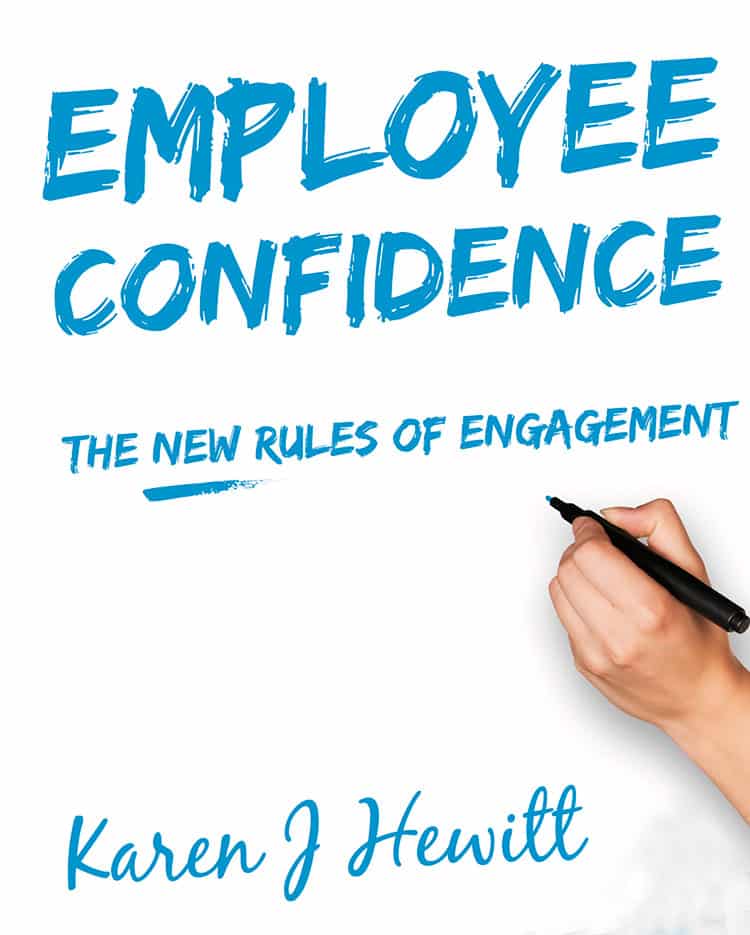The CEO’s Guide To Elevating Employee Engagement

Every CEO knows the importance of people to their business.
No matter how supported it is by technology, and no matter how far we advance with artificial intelligence, there is no substitute for human intelligence, and the power of teams when they work seamlessly together.
Human beings remain human beings, with a need for social interaction and connection, and a computer can never compete with their emotional intelligence, or their ability to innovate based on pattern recognition.
Engaging our people is critical to the business, because without them, and especially our high-performers, there is no business. People innovate; people build critical relationships, both internally and externally; and people win lucrative new contracts.
Surveys tell us that Employee Engagement is at an all-time low, but CEOs don’t need surveys to tell them what they are already experiencing closer to home, with alarming consequences. It’s getting more and more difficult to engage and retain talent, with high performers leaving companies in droves, to better offers from other companies or to set up new businesses.
For Employee Engagement, times are desperate, and desperate times require desperate measures. The world is changing faster than anyone can keep up, and the only solution is to disrupt. Disruption is a modern phenomenon, but the rationale behind it is years old. As Einstein famously said:
“You can’t solve a problem on the same level it was created. You have to rise above it, to another level.”
What is this other level for Engagement, and what do CEOs need to do to find it? How do they retain the people they need to take their business to the next level, to stay competitive and keep winning new orders and accolades?
It would be easy to jump on the first quick fix, offering our people metaphorical carrots to keep them happy – like free food and shopping vouchers. Such measures may bring a smile to an employee’s face in the short-term, but they won’t guarantee the longevity of their employment.
Think of these things as a minimum standard to looking after your people – their wellbeing – but don’t count on them to drive higher performance, engagement and employee retention – the latter requires a long-term investment in your people, and a fuller understanding of the deeper drivers of human motivation.
Daniel Pink argues that human motivation is predominantly intrinsic, and that people are motivated by three key things – purpose, autonomy and mastery. Your high performers will definitely want all three to keep them with you for the long run. And that’s just for starters!
Now what if you could not only keep your high performers, but have more of them, with not just high potentials (HIPOs) in your company, but all-potentials (ALLPOs)?
What if you could get every single person in your company operating at maximum potential, and moving in the same direction?
What a great win-win for both company and employee! And just imagine the extra productivity it would bring!
To have this, your employees need more than engagement; they need confidence. Engagement is what happens when your people are committed to your business. Action is what happens when your people are not just committed, but adopting the behaviours you are asking for, and confidence is the missing link.
Focusing on Employee Confidence, rather than Employee Engagement, leapfrogs old Employee Engagement models, because when confidence is there, engagement is a given and confidence is the key to high performance.
The sports world has known this for years, with confidence a daily topic on the lips of every high performing sports person, knowing that it is the difference that makes the difference – the key to that extra ounce of performance when standards are already impossibly high.
Is it time to take a page out of the sports world’s book, and put confidence on the business agenda?
Is it time to consider what our people need to get them operating at full potential, and reap the engagement rewards this approach will bring?
To grow as people, and as teams, your employees will need to take risks, and operate out of their comfort zones, which will regularly test their confidence.
How are you going to ensure they maintain the confidence reserves they need to maintain high performance?
Employee Confidence is a long-term opportunity for your business, but there are three steps you as a CEO can take today to make it a reality – three steps that might just stop one of your high-performers from resigning this week, or get you one more high performer through your company doors:
- Check your vision – is it ambitious enough to give ambitious employees a purpose, a cause they want to get behind? Is it something that will keep them with you rather than your competitor, and encourage them to go the extra mile for you, day in and day out?
- Check your people managers – it is often said that people don’t quit companies; they quit bosses, so is it time to give your people managers a minimum standard for managing their relationships with their subordinates? Are they giving feedback that motivates and inspires their people, for example, or sends them home in despair?
- Get confidence on every team agenda – ask them to discuss confidence at every team meeting; what it means and how they can use it to reach their, and their team’s, potential.
Employee Confidence is a long-term approach to Employee Engagement, and that’s where the beauty lies. Employee Confidence is both the mechanism for, and evidence of, culture change, because culture change is exactly what you require to take your Employee Engagement to a whole new level and retain your best talent.
Culture change, we know, takes time, but if you start with a mindset of disruption and make a long-term investment in what your people really need, you’ll soon start to see the quick wins!

Have you read?
# World’s Best Countries To Invest In Or Do Business.
# Most Expensive Countries In The World To Live In, 2019.
# Global Passport Ranking, 2019.
# The World’s Safest Cities Ranking.
# Most Startup Friendly Countries In The World.
Bring the best of the CEOWORLD magazine's global journalism to audiences in the United States and around the world. - Add CEOWORLD magazine to your Google News feed.
Follow CEOWORLD magazine headlines on: Google News, LinkedIn, Twitter, and Facebook.
Copyright 2025 The CEOWORLD magazine. All rights reserved. This material (and any extract from it) must not be copied, redistributed or placed on any website, without CEOWORLD magazine' prior written consent. For media queries, please contact: info@ceoworld.biz








